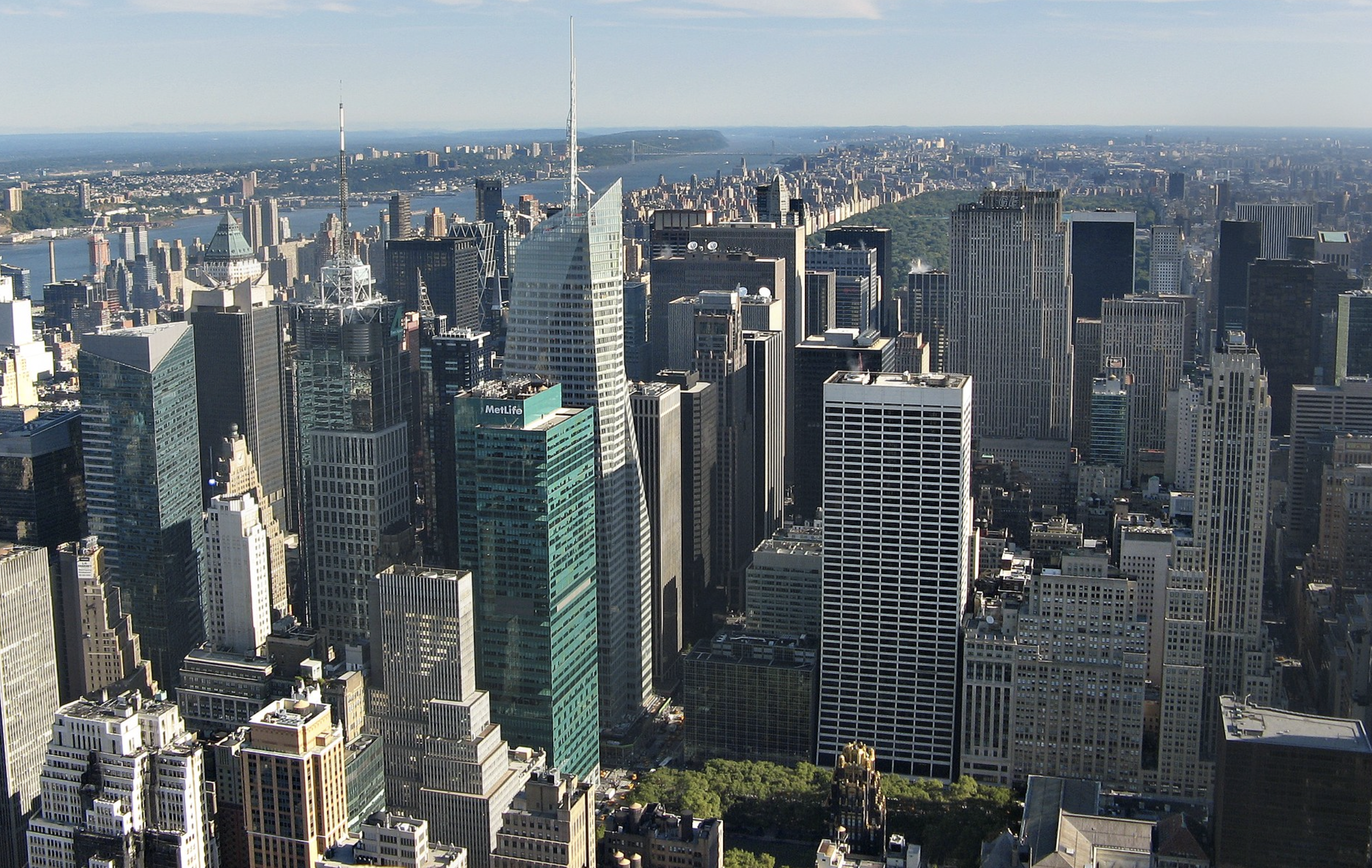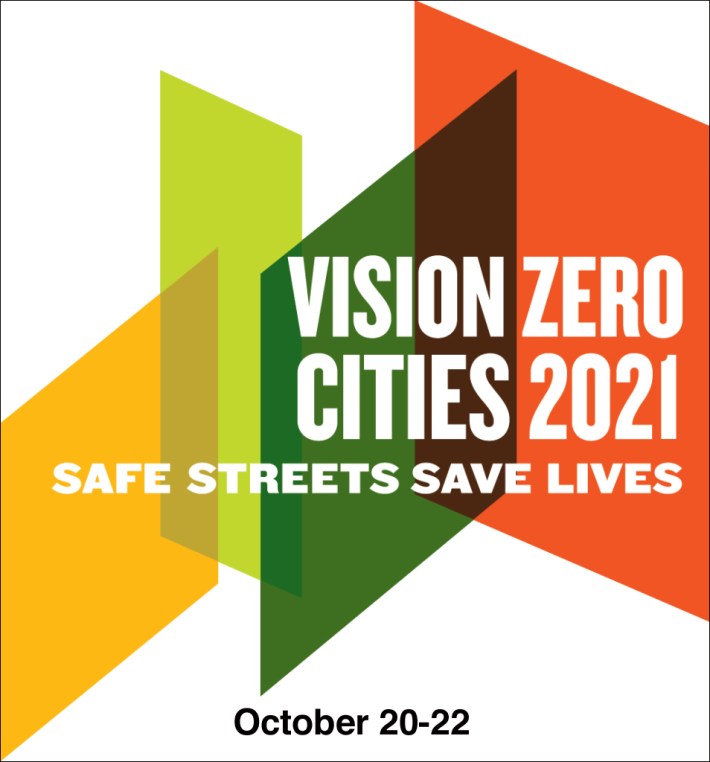Not-for-profit officials Elizabeth Goldstein and Adam Ganser have an idea for the next mayor: Why not designate a high-ranking Director of the Public Realm? The proposal is similar to one put forward by the livable streets non-profit Open Plans, which is advocating for an Office of Public Space Management. A version of this op-ed will appear in Transportation Alternatives's Vision Zero Cities Journal as part of the 2021 Vision Zero Cities Conference, Oct. 20-22, including walking and biking tours on Oct. 22. You can still register for the conference and tours at visionzerocities.org.
New York City may be best known for its skyline, but roughly 40 percent of its land area is composed of streets, sidewalks, plazas, arcades, waterfronts, parks, natural areas, playgrounds, community gardens, and privately owned public spaces, which collectively constitute the public realm. Despite the essential role these “spaces between buildings” play in urban life, the city lacks a central position for planning and maintaining the public realm.
Rather, oversight of the public realm is split across a vast array of agencies, beset by conflicting rules, competing priorities, and disjointed leadership. For example, depending on its type, a public plaza may be controlled by the Departments of City Planning, Transportation, or Parks and Recreation. Public playgrounds may fall under the jurisdiction of Parks, the New York City Housing Authority, or the Department of Education. In some cases, these public spaces are not governed by the city, but rather by not-for-profit partners or even private companies.
It's not that there aren’t examples. In Boston, a public realm director works with the city’s Streets Cabinet to implement people-oriented interventions on streets and sidewalks. The work is informed by the city’s Tactical Public Realm Guidelines and includes spearheading a Healthy Streets Initiative, an innovative pandemic-driven effort to expand pedestrian and cyclist space in streets. Boston’s coordinated efforts demonstrate how, by improving the design and amount of public spaces, the city can facilitate more physical activity and improve its citizens’ health.
Los Angeles has a chief design officer who works closely with half a dozen deputy mayors from different City services and agencies on planning and design considerations, including designing shade into the built environment. Los Angeles provides an example of mayoral coordination across a cabinet of key departments that shape the public realm.
In Seattle, the Mayor’s Office of Planning and Community Development has consolidated key staff from various City workgroups to increase collaboration, alignment, and implementation of projects and plans. One of its core initiatives is Outside Citywide, which compiles performance indicators and utilizes a social vulnerability analysis to drive public space investment across the city. Seattle’s success underscores the value of a data-driven approach to identify and meaningfully prioritize interventions that advance equitable outcomes.
Last summer, the Municipal Art Society of New York and New Yorkers for Parks issued a joint call for the creation of a new city role: the director of the public realm. This position would be dedicated to acting quickly in times of crisis to coordinate and marshal New York City’s vast array of agencies, and thinking innovatively in moments of calm about long-term improvements to the health and equity of public space across the city. The recommendation emerged from our joint Fight for Light campaign, founded by our two organizations in 2019 out of a shared concern about the lack of an effective park shadowing policy for the city and an opportunity to increase livability.
A cohesive, citywide vision for open space across sectors, agencies, and stakeholders can help deliver a more livable, equitable, and healthy city for all. In a dense and highly-mobile city like New York, crises like the COVID-19 pandemic and recent flash floods place high value on green space and a variety of transportation options, which are not equally available to all residents. According to the Trust for Public Land’s 2021 Park Equity Plan for New York City, communities of color have 34 percent less park space per person within a 10-minute walk, compared to white communities, and low-income communities have 21 percent less than high-income communities. Parks became New Yorker’s backyards and safe outdoor spaces during the pandemic, and essential stormwater management solutions during the recent floods, but they did not serve all New Yorkers equally.
During both crises, residents turned to bikes — New York City’s bikeshare program, Citi Bike, continually broke ridership records during the pandemic, and then set a new record the day after Hurricane Ida swept through the city. Yet a 2019 report investigating equity within the program found that the median household income in neighborhoods with Citi Bike docks is $90,400, compared to $54,700 in areas excluded from the network. Moreover, just 17 of the city’s residents of color live within Citi Bike’s service area compared with 37 percent of white residents. Even pandemic-response initiatives like the Open Streets program were inequitably implemented.
Further, a coordinated approach to the public realm would better serve New Yorkers and the changing needs of our city. As former Parks Commissioner Mitchell Silver once said, “When walking down a New York City street, the average person doesn’t experience public space in terms of jurisdiction, nor do they care whether this piece is managed by the Department of Transportation or that this other part is overseen by the Parks Department, and that piece over there is within the purview of the Department of Environmental Protection. But, unfortunately, that is the approach historically taken when planning and building the public realm, and it can lead to a disjointed series of public spaces that create obstacles for public use.”
Recently in Crain’s New York Business, Tom Harris, president of the Times Square Alliance, noted the jurisdictional overlap on just one block in Times Square:
- Vendors are licensed by the Department of Consumer and Worker Protection, permitted by the Department of Health and Mental Hygiene, and inspected by the Fire Department or Police Department. Violations are adjudicated by the Office of Administrative Trials and Hearings;
- Parking and deliveries are regulated by the DOT but enforced by the NYPD; and
- Street construction is permitted by the DOT but completed by utilities, city contractors, or private entities.
Throughout the five boroughs, sidewalks and bike lanes are routinely blocked by freight delivery, construction, garbage trucks, and police vehicles, with no strategic coordination of how these closures taken together may affect street life on a given block. Even in some of the most popular programs to come on board since the pandemic — like Open Streets — there has been considerable disagreement about best practices in managing these reimagined public spaces, including questions as basic as which ones to maintain, where to expand access, and whether or how to police them. Agencies often openly contradict each other. Time after time, local nonprofits and community organizations such as the Open Streets Coalition have decried programs’ inefficiencies and inequities, and few lasting or structural changes are made.
From pandemic to protest, the events of the last year have only underscored the importance of the public realm to everyday life in New York City. In a dense metropolis, where backyards and balconies are luxuries few can afford, access to well-run and functional public space is crucial even without an airborne-virus-induced pandemic or hundred-year weather events coming annually. This is a moment when all cities should be looking to the public realm with an eye for innovation.
Public space is not a fringe amenity; it is an essential piece of our urban infrastructure. We deserve a champion within city government that stewards this resource for all New Yorkers.
Elizabeth Goldstein (@MASNYC) has served as the president of the Municipal Art Society of New York since 2017. Adam Ganser (@NY4P) is executive director of New Yorkers for Parks, which protects and promotes open space across the city.







